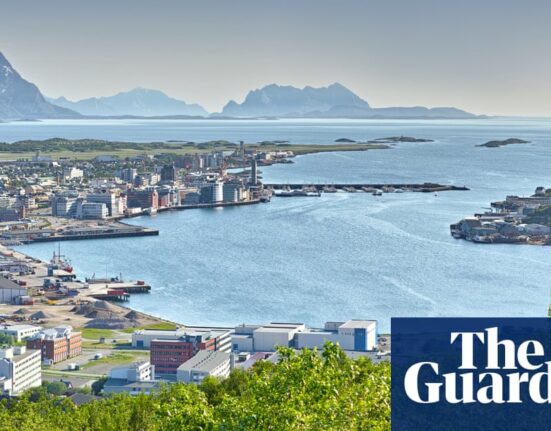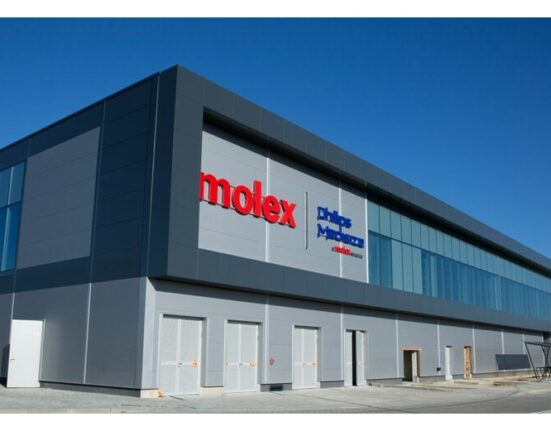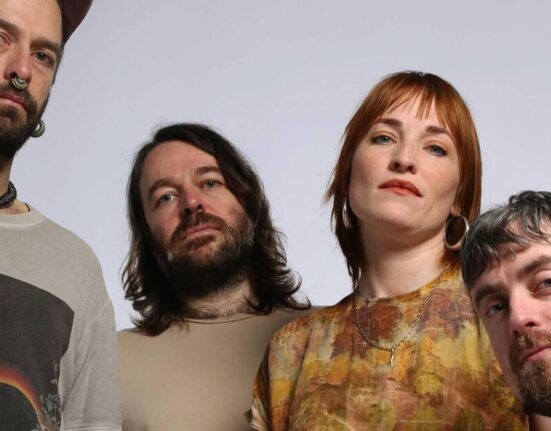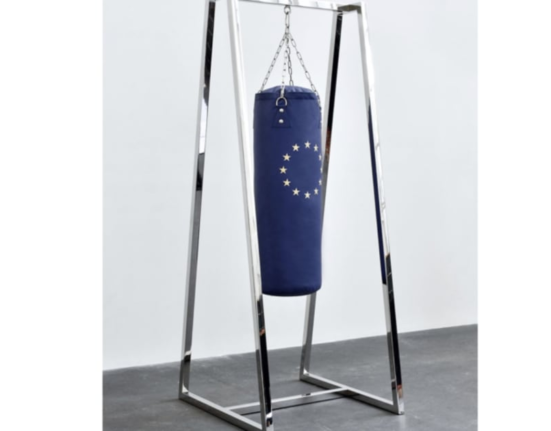A new era for one of the world’s most storied college campuses began on December 1, 2023, when the Raclin Murphy Museum of Art opened at the University of Notre Dame in South Bend, IN. Located within the nine-acre Charles B. Hayes Family Sculpture Park, the 70,000-square-foot building occupies a prominent intersection where the school meets the greater community, anchoring and functioning as a gateway to an expanding on-campus arts district.
Twenty-three state-of-the-art historically thematic galleries share highlights from Notre Dame’s nearly 31,000 item collection, one of the oldest and most highly regarded at an academic institution in the United States, as well rotating exhibitions.
“There are approximately 1,000 works on display from our collections at any one time,” Joseph Antenucci Becherer, Director of the Raclin Murphy Museum of Art, Curator of Sculpture, and UND Professor of Art History, told Forbes.com. “The flow of the galleries allows us to pursue the history of art both chronologically and thematically and instigate conversations across time and place. We have been able to present art of the Indigenous Americas more fully, art of the Spanish Americas has its own designated gallery, international modern and contemporary art has gained significant space and connects with both the sculpture park and commissions throughout the building.”
Upgraded display cases provide greater opportunity for presentation of the University’s prized collection of works on paper, and, for the first time ever, textiles.
“We have taken an integrated approach, frequently displaying paintings, sculpture, decorative arts, works on paper (and) textiles for a more complete understanding of ideas,” Becherer explained of the new museum’s curation. “We have taken measures to integrate European and American, looked at the long arc of time in many cultures like Africa and Native North America, and tried to present the international scope of Modern and Contemporary art as a reflection of the beautiful complexities of the world in which we live.”
While the permanent collection dates back to 1875, it is art from “the world in which we live” at this very moment where the Raclin Murphy Museum of Art makes its strongest statement. A series of prominent commissions from heavyweight living artists stands as a testament to the institution’s forward focus.
New Commissions Distinguish New Museum
Newly commissioned works by globally renowned artists are integrated into the fabric of the building design, beginning with Endless, a 36-foot stainless steel sculpture by Jaume Plensa positioned outside of the Museum entrance. The piece features alphabets in eight languages and symbolizes Notre Dame’s commitment to diversity, internationalization, knowledge and global service.
A monumental carved text panel by Jenny Holzer welcoming visitors on the front façade of the building reads, “We are in the midst of reality responding with joy.”
Stepping into the atrium reveals a circular terrazzo and bronze floor installation by Kiki Smith. Sea of Stars, one of the artist’s largest public projects to date, features 39 hand-drawn and cast stars inspired by celestial images frequently seen in Medieval, Renaissance and Byzantine depictions of the Madonna as protectress and “Star of the Sea.”
Also prominently mounted in the atrium is Maya Lin’s St. Joseph (River) Watershed, a reflection on our shared natural environment. The expansive relief with shimmering recycled silver honors the region’s Indigenous people and celebrates the unique geographic, sociological and environmental elements of the St. Joseph River and watershed.
The Raclin Murphy will also unveil new acquisitions by Magdalena Abakanowicz, Zhang Huan, Dietrich Klinge, Julie Mehretu, David Ocelotl Garcia, Jamie Okuma, Yinka Shonibare, Ursula von Rydingsvard, Dana Warrington, Jason Wesaw and others.
A-listers, each and every one.
“It would be great to call out any of the recent acquisitions by Jenny Holzer or Jaume Plensa, Maya Lin or Jamie Okuma, Kiki Smith or Julie Mehretu, but there is something larger and of greater importance here,” Becherer said of highlights at the new museum. “This is a museum about tradition and innovation, the classic and the contemporary–a respectful celebration of time and place, but, simultaneously, illuminating the human condition which breaks down time and place.”
Siting the Raclin Murphy within a sculpture park also allows for the continued growth of the museum’s outdoor sculpture collection. The park installation will feature new acquisitions by Sir Anthony Caro, Dietrich Klinge, Clement Meadmore, Louise Nevelson, Beverly Pepper and Ursula von Rydingsvard among others and provide a new environment for works by Deborah Butterfield, Peter Randall-Page and George Rickey.
‘More than a Treasury’
Notre Dame’s art collection had resided in the Snite Museum of Art since 1980. The Raclin Murphy Museum of Art, which also includes several research and study venues, a gift shop and café, and a chapel, Our Lady, Queen of Families, represents Phase One of a two phase overhaul of the University’s arts footprint.
Inclusion of the chapel acknowledges the University’s Catholic charter.
“One has to recognize that the history of art and the history of the Catholic Church have been intermingled for millennia,” Becherer said. “We are not a religious art museum, but these foundations recognize the significance of human creativity, human expression, through the arts, and our museum celebrates that every day and now, in an astonishing new way.”
A planned second phase for research will provide additional galleries as well as a works-on-paper study center, allowing greater access to the museum’s extraordinary collections, along with additional space for teaching, administrative and curatorial offices, open collections storage and an auditorium. The Raclin Murphy joins the DeBartolo Performing Arts Center, Charles B. Hayes Family Sculpture Park, Matthew and Joyce Walsh Family Hall of Architecture and O’Neill Hall of Music in an assemblage of new facilities dedicated to the arts on the south side of the Notre Dame campus.
“The physical location of the museum at the very entrance to the campus allows the arts to be a welcoming ambassador to all. We have always been here for the academy, but now we can reach out to the community, the world, with authenticity and sincerity,” Becherer said. “A great museum must be more than a treasury, it has to be a resource and touchstone, a microscope and a telescope.”
Admission to the Raclin Murphy Museum of Art is free.







